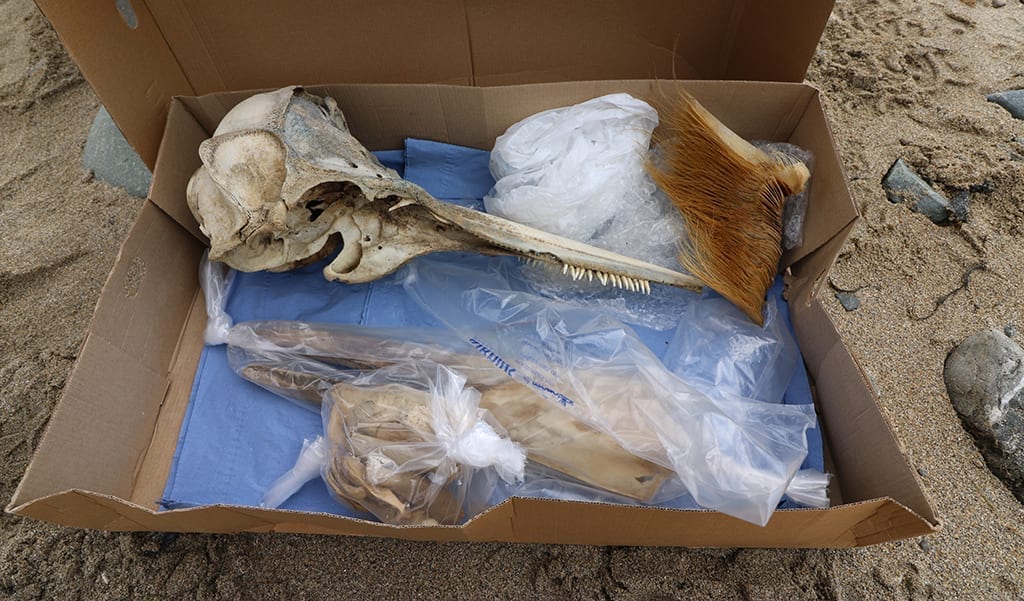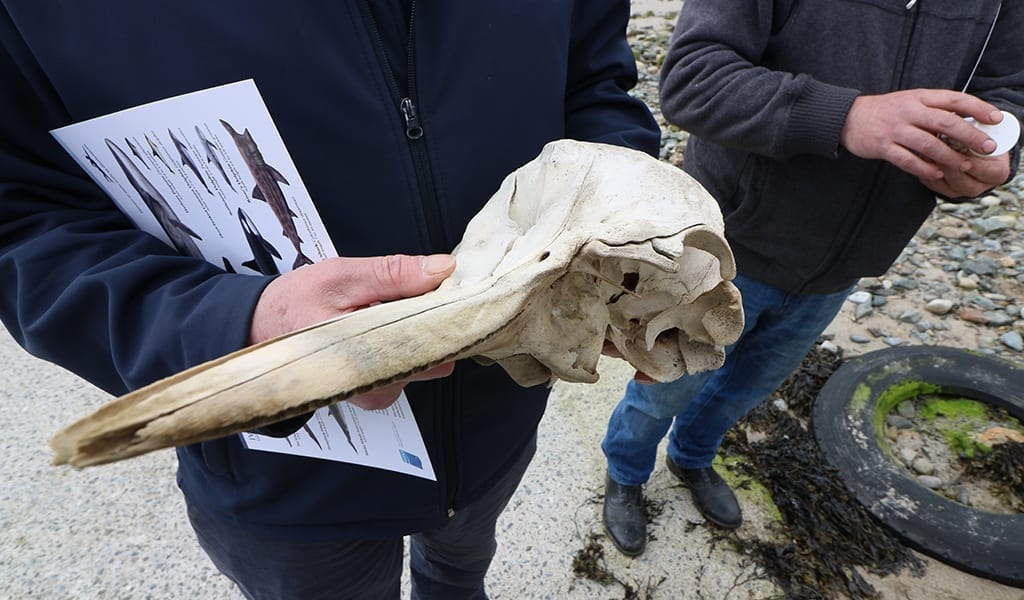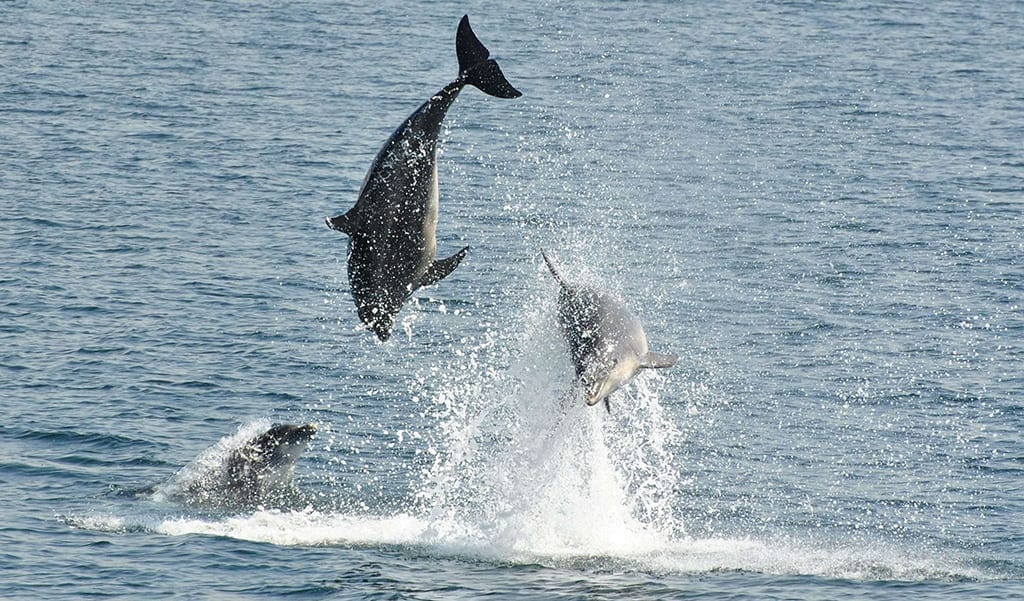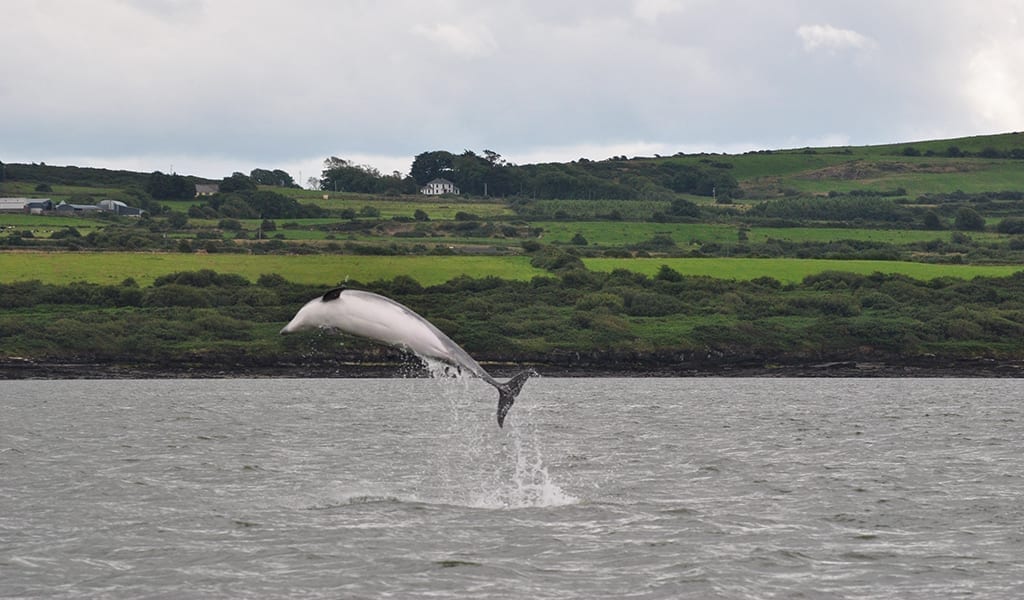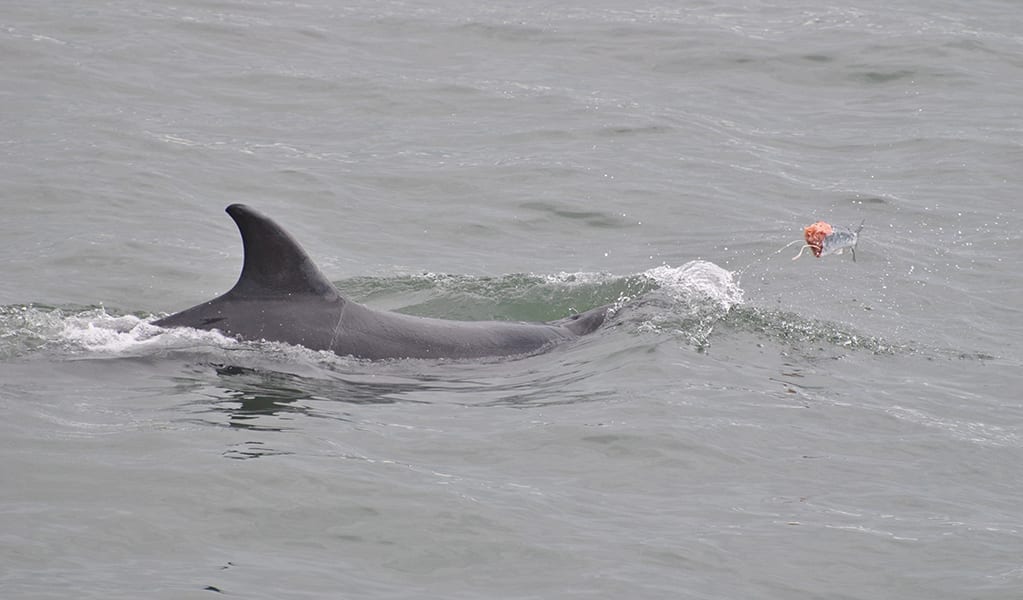Species
Identification
Field Skills
Patience is essential for carrying out either a land or sea based watch because it may take time for animals to be sighted if any are present at all while you watch. On a good day with suitable conditions you may pick out distant whale blows with the naked eye or foraging dolphins and porpoises that are regularly revealed by feeding seabirds, especially gannets and gulls.
More subtle clues like clusters of splashes when the sea is flat calm may help pinpoint a group of dolphins travelling at speed while oval shaped “footprints” of calm water would indicate where a whale recently dived.
Overall, the more time you put into watching the water for whales, dolphins and porpoises the more likely it is that tell-tale signs of these animals will become more obvious to you through rewarding sightings of these apex marine predators.
Species ID training is available. Please contact the IWDG to arrange training in your area.
Behaviours
More often than not, cetacean sightings are extremely brief so there might be little to go on to identify the species you saw. Sometimes observed behaviours can steer you towards an identity. The more times you see animals in the flesh the more you will “get your eye in” and start to pick up on other sighting tricks to help identify your sightings to species level but here is what you can expect from our whales, dolphins and porpoises.
Whales
If you see a tall wispy spray rising straight up from the seas surface, a large whale is nearby. Fin and humpback whale blows differ based on their size and shape where a fin whales is tall and “column” like and a humpbacks is low and “bushy”.
Humpback whales are the only species to regularly tail fluke in inshore waters and they feed by lunging vertically out of the water while fin and minke whales lunge horizontally. Minke and humpback whales occasionally breach. The splash caused by either species is very obvious and it can direct you towards where they might breach again. The elongated flippers of a humpback whale instantly reveals the species identity.
Dolphins
Species such as bottlenose and common dolphins frequently approach and interact with boats by bow or wake riding them. Dolphins regularly breach where they “jump” clear out of the water.
When dolphins feed they usually swim quickly in tight circles to corral fish. Bottlenose dolphins in the Shannon Estuary are known to “fish toss” their prey into the air.
Porpoises
Unless you are fortunate to come across a group of actively feeding or socialising porpoises the only behaviour you will most likely see is surfacing. They generally give you two views before vanishing while at sea but you have to have your whit’s about you to spot this species.

